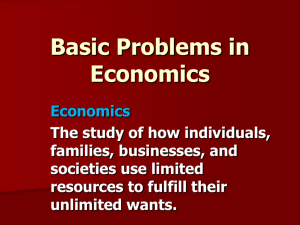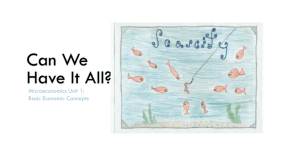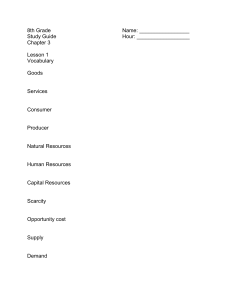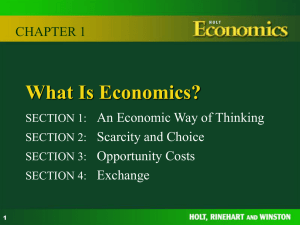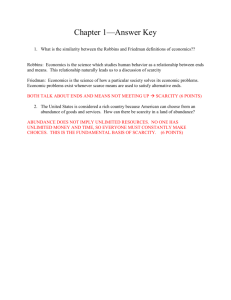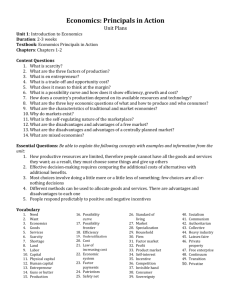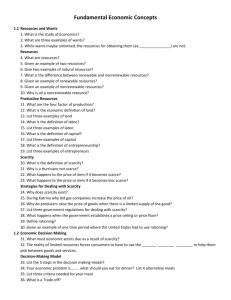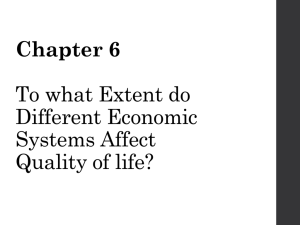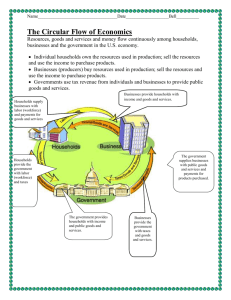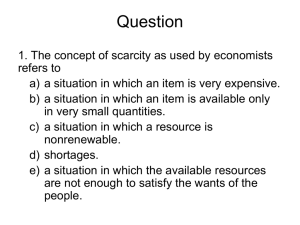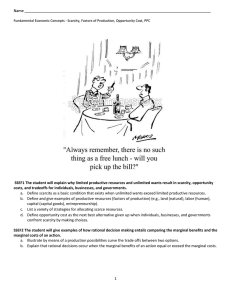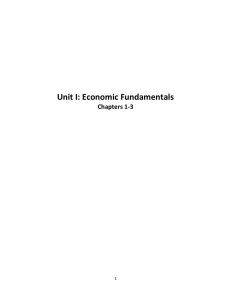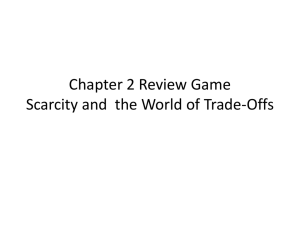scarcity quiz
advertisement
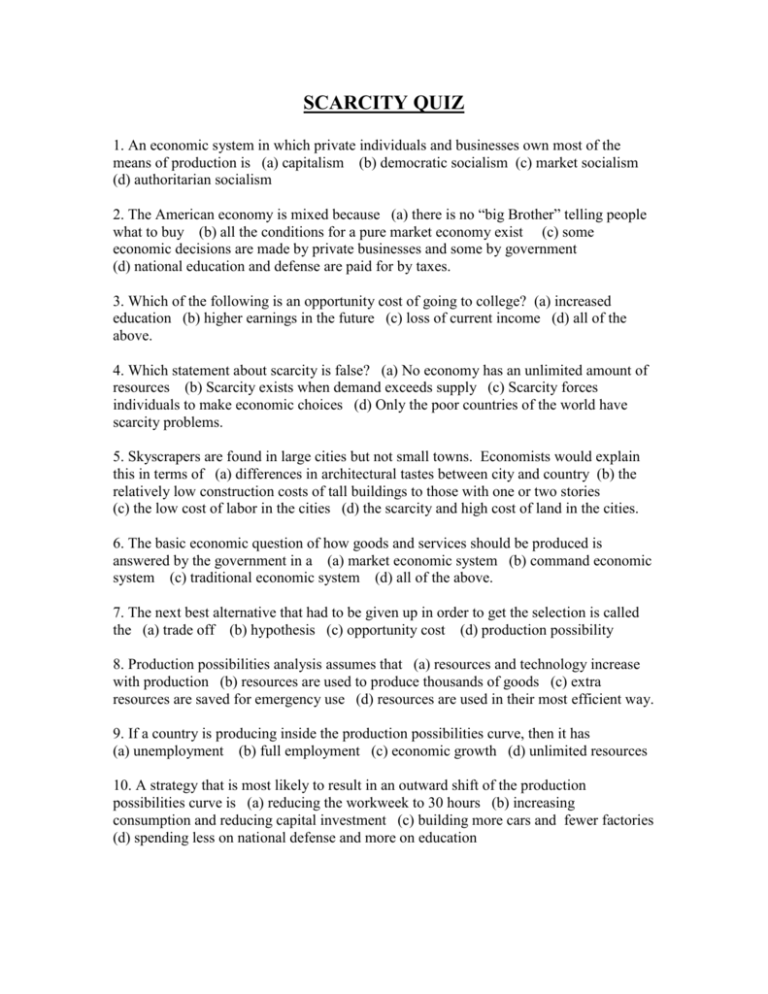
SCARCITY QUIZ 1. An economic system in which private individuals and businesses own most of the means of production is (a) capitalism (b) democratic socialism (c) market socialism (d) authoritarian socialism 2. The American economy is mixed because (a) there is no “big Brother” telling people what to buy (b) all the conditions for a pure market economy exist (c) some economic decisions are made by private businesses and some by government (d) national education and defense are paid for by taxes. 3. Which of the following is an opportunity cost of going to college? (a) increased education (b) higher earnings in the future (c) loss of current income (d) all of the above. 4. Which statement about scarcity is false? (a) No economy has an unlimited amount of resources (b) Scarcity exists when demand exceeds supply (c) Scarcity forces individuals to make economic choices (d) Only the poor countries of the world have scarcity problems. 5. Skyscrapers are found in large cities but not small towns. Economists would explain this in terms of (a) differences in architectural tastes between city and country (b) the relatively low construction costs of tall buildings to those with one or two stories (c) the low cost of labor in the cities (d) the scarcity and high cost of land in the cities. 6. The basic economic question of how goods and services should be produced is answered by the government in a (a) market economic system (b) command economic system (c) traditional economic system (d) all of the above. 7. The next best alternative that had to be given up in order to get the selection is called the (a) trade off (b) hypothesis (c) opportunity cost (d) production possibility 8. Production possibilities analysis assumes that (a) resources and technology increase with production (b) resources are used to produce thousands of goods (c) extra resources are saved for emergency use (d) resources are used in their most efficient way. 9. If a country is producing inside the production possibilities curve, then it has (a) unemployment (b) full employment (c) economic growth (d) unlimited resources 10. A strategy that is most likely to result in an outward shift of the production possibilities curve is (a) reducing the workweek to 30 hours (b) increasing consumption and reducing capital investment (c) building more cars and fewer factories (d) spending less on national defense and more on education 11. The basic economic question is how to (a) give equal shares of wealth to all people (b) produce a surplus of consumer goods (c) satisfy unlimited wants with limited resources (d) earn more money 12. In a market economy, a low price is a signal for (a) producers to supply more and consumers to buy less (b) producers and consumers to buy more (c) producers to offer less and consumers to buy more (d) government to step in a protect producers 13. If a nation’s production possibilities curve has been shifting outward at an average of 3% per year, which of the following statements is not correct? (a) The productive capacity of the economy is expanding (b) More of all goods can be produced (c) The economy is experiencing a business contraction (d) Labor and resources must be being utilized effectively. 14. The amount of government regulation over the economy in the twentieth century (a) increased (b) decreased (c) was cut in half (d) remained relatively constant. 15. The three basic economic questions are (a) what?, how?, and for whom? (b) why?, where?, and when? (c) why?, what?, and how? (d) what?, how?, and when?
